Are you looking for the perfect way to protect your garden from the bitter winds? Whether it’s a gentle summer breeze or powerful winter gust, creating a windbreak in your outdoor space can make all the difference.
We’ll explore some of the best ideas and tips on how to create an effective windbreak that works with your garden design and style while controlling unwanted energy costs, so whether you’re an avid gardener or just getting started, read on to discover more!
How to Create Shelter in a Windy Garden?
Creating an effective shelter from strong winds starts with understanding your environment and the prevailing wind direction. Once you know this, you can determine which area of your garden is most vulnerable to wind damage and how best to protect it.
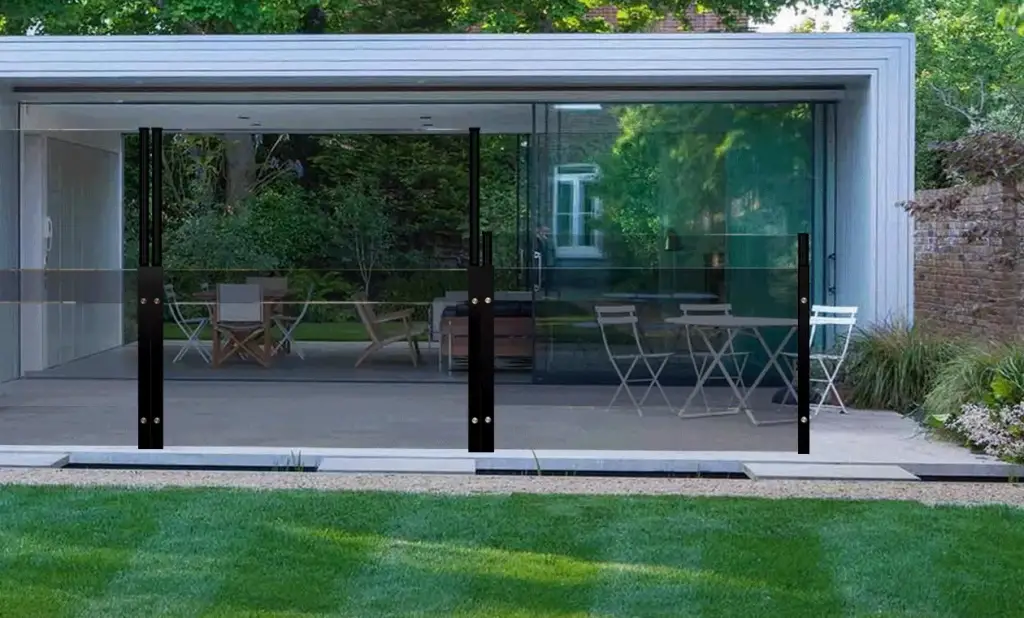
There are a few different types of windbreaks that can be used in any outdoor space but some may work better than others depending on your personal needs. Here are some of the most popular options:
- Trees and hedges: These natural windbreaks can be very effective in shielding your garden from strong winds. They’re also a great way to add more life and colour to your outdoor space.
- Awnings and screens: Awnings and screens are a great way to create an enclosed space that can help reduce the wind speed around your garden. These are often easy to install and come in a variety of colours and styles, making them ideal for any outdoor space.
- Outdoor furniture: Placing heavy outdoor furniture such as chairs, couches, or benches near the edges of your garden can help create a barrier against strong winds. This is especially effective if you have a large outdoor space to work with.
- Walls and fences: Installing walls or fences can be an effective way to protect your garden from high winds. Fences are often the most affordable option and come in a variety of materials such as wood, metal, and vinyl. However, walls may be more effective if you have a smaller space to work with.
Garden Windbreak Ideas
Willow fence panels
Willow fence panels are a great way to create an effective windbreak that looks natural and blends in with your outdoor space.
They’re also durable, which makes them a great long-term investment for your outdoor space.Arbour seating
Arbour seating is a great way to create a sheltered area in your garden that can also double as extra seating. They’re usually made from wood and come in various designs, so you can customise it to suit your preferences. Plus, they’re much more affordable than other windbreak solutions.
Extending Fence Panel
Extending fence panels are a great option if you’re looking for an effective windbreak that is both aesthetically pleasing and cost-effective. These panels come in various sizes, so you can install them in any size garden or outdoor space. Plus, they’re easy to install and made from durable materials such as metal or wood.
DIY Wooden log windbreak
A DIY wooden log windbreak is a great way to create an effective windbreak without breaking the bank. All you need are some logs, screws, and a saw, and you can customise it to fit any size of garden or outdoor space. Plus, it adds character and charm to your outdoor area.
Decorative screen panels
Decorative screen panels are a great way to create an effective windbreak that also adds style and charm to your outdoor space. They come in various shapes and sizes, so you can customise it to fit any size of garden or outdoor area. Plus, they’re easy to install and made from durable materials such as metal or wood.
Pergola with panels
A pergola with panels is the perfect way to create an effective windbreak that also adds style and sophistication to your outdoor space. It’s easy to install and comes in various designs, so you can customise it to suit your preferences. Plus, it’s made from durable materials such as metal or wood, making it a great long-term investment for your outdoor space.
Slatted wooden screen
A slatted wooden screen is an effective way to create a windbreak that also adds style and character to your outdoor area. It’s easy to install and comes in various lengths, so you can customise it to fit any size of garden or outdoor space.
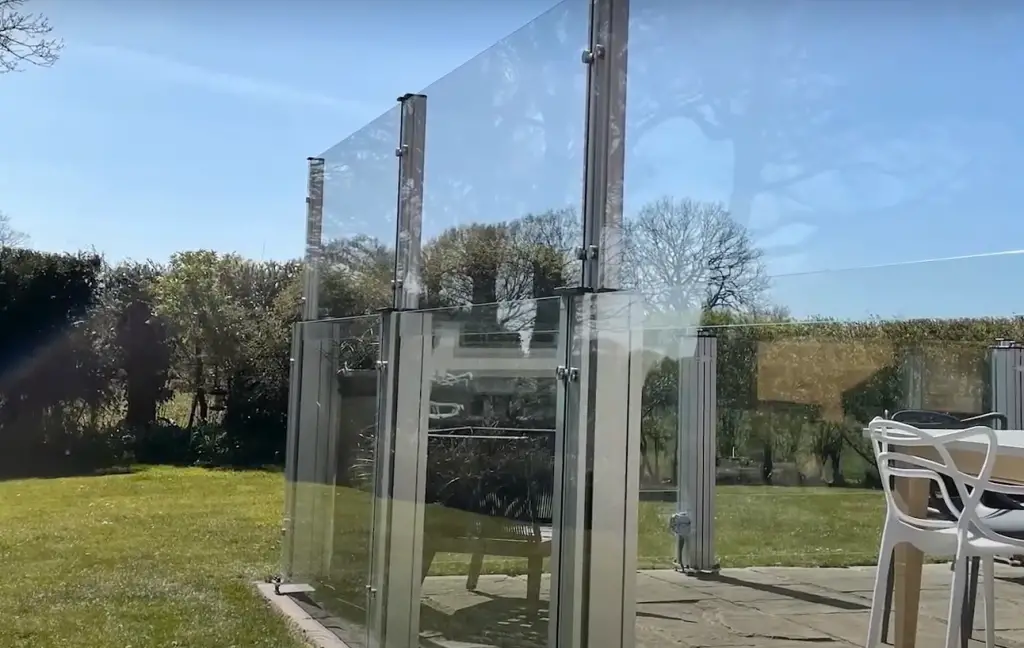
Plus, it’s made from durable materials such as wood, making it a great long-term investment for your outdoor space.
Hedge windbreak
Hedge windbreaks are a great way to create an effective windbreak that also looks natural and integrates with your existing landscape. They’re easy to install, come in various sizes, and usually require minimal maintenance. Plus, they’re much more affordable than other windbreak solutions.
Living willow ‘fedge’
A living willow ‘fedge’ is a great way to create an effective windbreak that also looks natural and blends in with your outdoor space.
It’s easy to install and comes in various lengths, so you can customise it to fit any size garden or outdoor area. Plus, it’s made from durable materials such as willow, making it a great long-term investment for your outdoor space.
Tips for Successfully Creating Garden Windbreaks
Creating an effective windbreak isn’t as easy as it sounds – there are a few tips that can help ensure your success!
- Start by assessing the size and shape of your garden or outdoor space. This will help you decide what type of windbreak will work best for your needs.
- Research different types of windbreaks, such as arbours, fence panels, living willow ‘fedges’, etc., to find one that fits with your desired aesthetic.
- Be sure to install the windbreak correctly, taking into account the direction of the prevailing winds.
- Regularly maintain your windbreak – trim and prune any plants that may be blocking airflow.
- Finally, ensure that you’re using durable materials for your windbreak so that it will last for years to come.
By following these tips, you can be sure to create an effective windbreak that fits in with your outdoor space.
FAQ
What is the best windbreak for a garden?
The best windbreak for a garden will depend on the size and shape of your outdoor space as well as your desired aesthetic. Options include arbours, fence panels, living willow ‘fedges’, pergolas with panels, decorative screen panels, slatted wooden screens, and hedge windbreaks.
How do I install a windbreak in my garden?
Installing a windbreak in your garden is relatively easy, but it’s important to take into account the direction of the prevailing winds and use durable materials. Start by assessing the size and shape of your garden or outdoor space to decide what type of windbreak will work best for your needs.
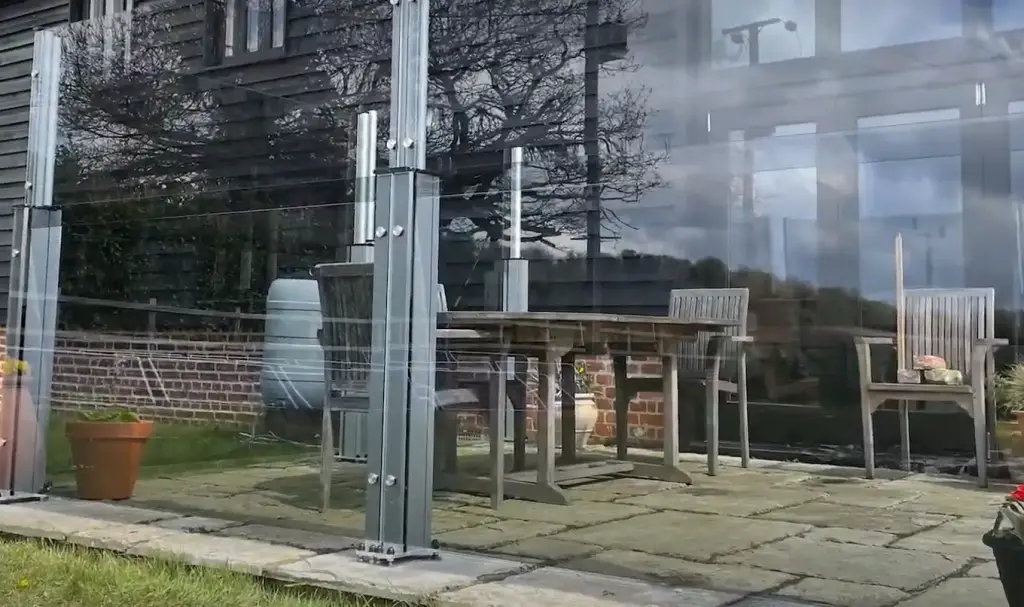
Research different types of windbreaks, such as arbours, fence panels, living willow ‘fedges’, etc., to find one that fits with your desired aesthetic.
Finally, ensure you’re installing the windbreak correctly, following all instructions and taking into account the direction of the prevailing winds.
Do I need to maintain my garden windbreak?
Yes, regular maintenance is important for keeping your windbreak in good condition and protecting your outdoor area from strong winds. Be sure to trim and prune any plants that may be blocking airflow, as well as inspect it periodically for damage or wear and tear.
Additionally, use durable materials such as wood or willow so that your windbreak will last for years to come.
How do you build a wind barrier in a garden?
Building a wind barrier in your garden is relatively easy, depending on the type of windbreak you choose. Start by assessing the size and shape of your garden or outdoor space to decide what type of windbreak will work best for your needs.
Research different types of windbreaks, such as arbours, fence panels, living willow ‘fedges’, etc., to find one that fits with your desired aesthetic.
Finally, ensure you’re installing the windbreak correctly, following all instructions and taking into account the direction of the prevailing winds.
Once installed, be sure to maintain your windbreak regularly by trimming and pruning any plants that may be blocking airflow, as well as inspecting it periodically for damage or wear and tear.
What can be used as an alternative to windbreaks?
Alternative options to windbreaks include living walls, lattice screens, trellis panels and privacy screens. These can be used in combination with or instead of traditional windbreak materials such as wood or willow.
Additionally, some plants such as evergreen trees and shrubs can also provide natural windbreaks. However, it’s important to note that these are less effective in providing full protection from strong winds.
How do I stop the wind in my back garden?
The best way to stop the wind in your back garden is to install a windbreak, such as an arbour, fence panel, living willow ‘fedge’, pergola with panels, decorative screen panel, or slatted wooden screens. Additionally, you can use plants such as evergreen trees and shrubs for natural protection from strong winds.
Be sure to install the windbreak correctly, following all instructions and taking into account the direction of the prevailing winds. Additionally, make sure to use durable materials such as wood or willow so that your windbreak will last for years to come.
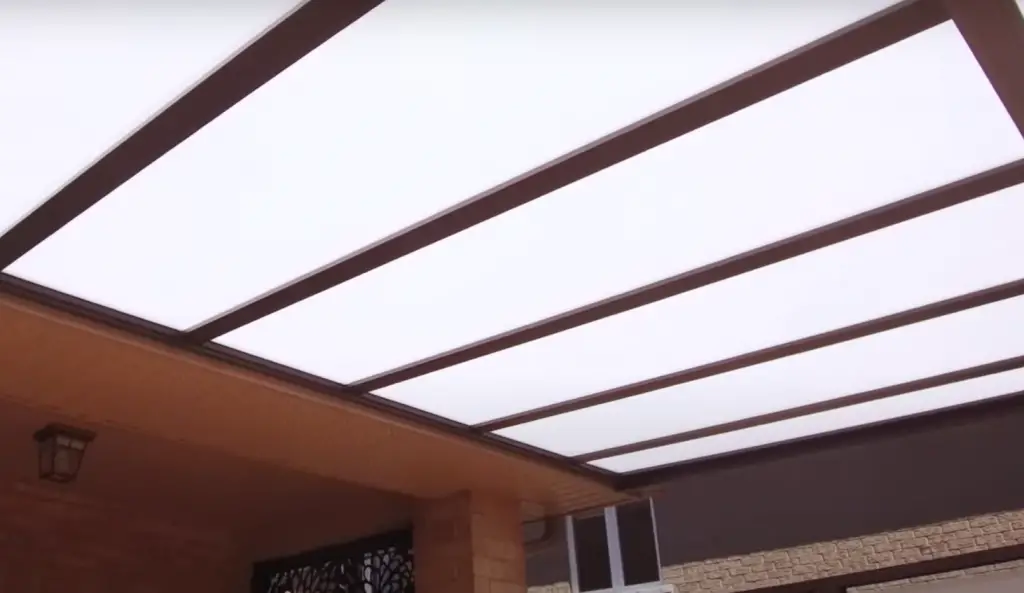
Finally, remember to regularly maintain your windbreak by trimming and pruning any plants that may be blocking airflow, as well as inspecting it periodically for damage or wear and tear. With the right windbreak in place, your back garden is sure to be protected from strong winds year round.
What is the most effective windbreak?
The most effective windbreak will depend on the size and shape of your garden or outdoor space, as well as the direction of the prevailing winds. Generally speaking, a combination of arbours, fence panels, living willow ‘fedges’, pergola with panels, decorative screen panel, and slatted wooden screens is typically the most effective windbreak option.
Additionally, be sure to use durable materials such as wood or willow so that your windbreak will last for years to come.
Finally, remember to regularly maintain your windbreak by trimming and pruning any plants that may be blocking airflow, as well as inspecting it periodically for damage or wear and tear.
What are the disadvantages of windbreaks?
The main disadvantage of windbreaks is that they can reduce airflow in the area, which can cause stagnant air and pests. Additionally, some types of windbreaks such as living walls or lattice screens may require more maintenance than other options such as fence panels or a pergola with panels.
Also, depending on your location, some types or materials of windbreaks may not be permitted due to zoning regulations. Finally, as windbreaks can be quite expensive and labour-intensive to install, it’s important to ensure you choose the right type for your needs before investing in one.
What should I consider when choosing a windbreak?
When choosing a windbreak, it’s important to consider the size and shape of your garden or outdoor space, as well as the direction of the prevailing winds.
Additionally, you should take into account the type of materials available for windbreaks, such as wood or willow, and select one that is durable and long-lasting.
Furthermore, consider the installation process for different types of windbreaks, as some may be more labour-intensive than others. Finally, it’s important to factor in any zoning regulations or restrictions in your location before investing in a windbreak.
What plants can be used as windbreaks?
Some plants such as evergreen trees and shrubs can be used to provide natural windbreaks. However, it’s important to note that these are less effective in providing full protection from strong winds than traditional windbreak materials such as wood or willow.
Additionally, when using plants for a windbreak, it’s important to consider the type of soil and climate in your location.
What is the best way to install a windbreak?
When installing a windbreak, it’s important to follow all the instructions and take into account the direction of the prevailing winds. Additionally, make sure you use durable materials such as wood or willow so that your windbreak will last for years to come.
Furthermore, be sure to adequately prepare the area where you will install your windbreak. This may include measuring out the space and digging trenches for post foundations, as well as staking posts securely in place.
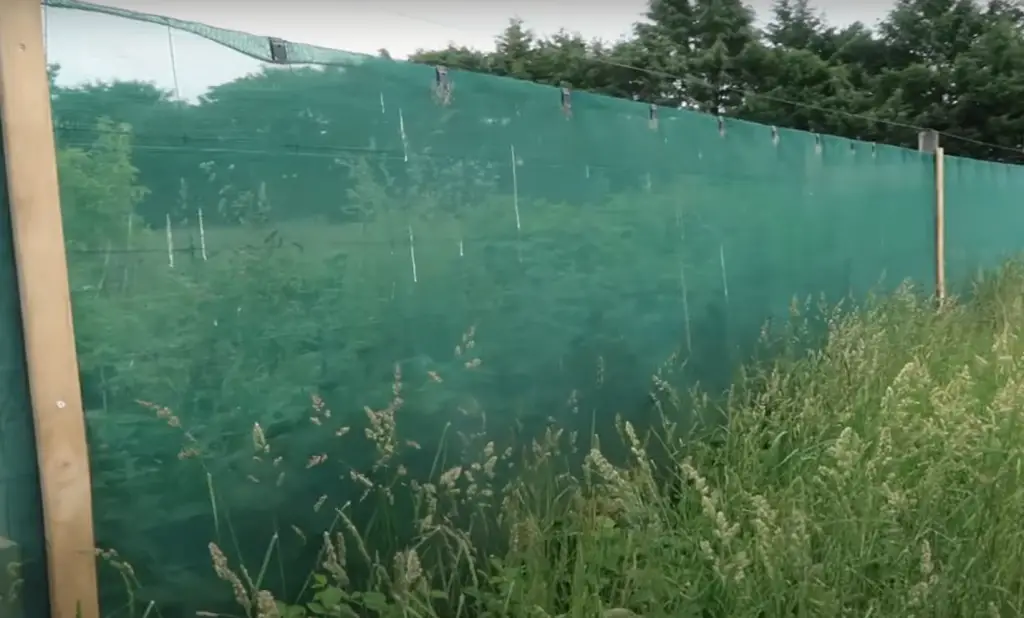
Finally, remember to regularly maintain your windbreak by trimming and pruning any plants that may be blocking airflow, as well as inspecting it periodically for damage or wear and tear.
How often should I maintain my windbreak?
To ensure that your windbreak remains effective, it’s important to regularly maintain it by trimming and pruning any plants that may be blocking airflow, as well as inspecting it periodically for damage or wear and tear. Additionally, depending on the type of material used in your windbreak, you may need to treat it with a weatherproof finish or other protective coating every few years.
Finally, remember to check your windbreak for damage after storms or heavy winds, as this may require repairs.
How can I make my windbreak more effective?
To make your windbreak more effective, you may want to consider reinforcing it with additional materials or structures. For example, adding a fence panel or trellis behind your existing windbreak can help to create an even stronger barrier against strong winds.
Additionally, using high-quality and durable materials such as wood or willow can also help to make your windbreak more effective.
Finally, it’s important to ensure that your windbreak is installed correctly and regularly maintained in order to keep it functioning at peak performance.
Why is windbreak construction important?
Windbreak construction is important because it can help to protect your home and garden from strong winds, thereby preventing damage. Additionally, windbreaks can also help to reduce noise pollution and provide privacy for your outdoor space.
Furthermore, properly constructed windbreaks can help to reduce the amount of dust and debris that enters your home or garden, as well as protect against soil erosion.
Finally, windbreaks are also important in agricultural settings, as they can help to reduce the drying out of crops and other plants due to strong winds.
Does my windbreak need to be inspected?
Yes, all windbreaks should be regularly inspected for damage or wear and tear. Additionally, depending on the type of material used in your windbreak, you may want to consider treating it with a weatherproof finish or other protective coating every few years.
Finally, remember to check your windbreak for damage after storms or heavy winds, as this may require repairs. A professional can be consulted to help inspect and maintain your windbreak if needed.
Do windbreaks need to be maintained?
Yes, all windbreaks should be regularly maintained. This may include trimming and pruning any plants that may be blocking airflow, as well as inspecting it periodically for damage or wear and tear.
Additionally, depending on the type of material used in your windbreak, you may want to consider treating it with a weatherproof finish or other protective coating every few years.
Does a windbreak need to be securely installed?
Yes, it is important to ensure that your windbreak is securely installed. This may include measuring out the space and digging trenches for post foundations, as well as staking posts securely in place.
Additionally, using high-quality and durable materials such as wood or willow can also help to make sure your windbreak is securely installed. Finally, it’s important to seek the help of a professional if you are unsure of how to secure your windbreak correctly.
Do windbreaks come in different sizes?
Yes, windbreaks can come in a variety of shapes and sizes depending on the size of your space and the level of protection you are looking for. Additionally, they can be customised with a variety of materials and structures to provide additional reinforcement.
For example, adding a fence panel or trellis behind your existing windbreak can help to create an even stronger barrier against strong winds. Finally, it’s important to ensure that your windbreak is installed correctly and regularly maintained in order to keep it functioning at peak performance.
Does a windbreak need to be waterproofed?
Yes, depending on the type of material used in your windbreak, you may want to consider treating it with a weatherproof finish or other protective coating every few years. Additionally, this can also help to protect against rot and decay due to sun exposure and moisture.
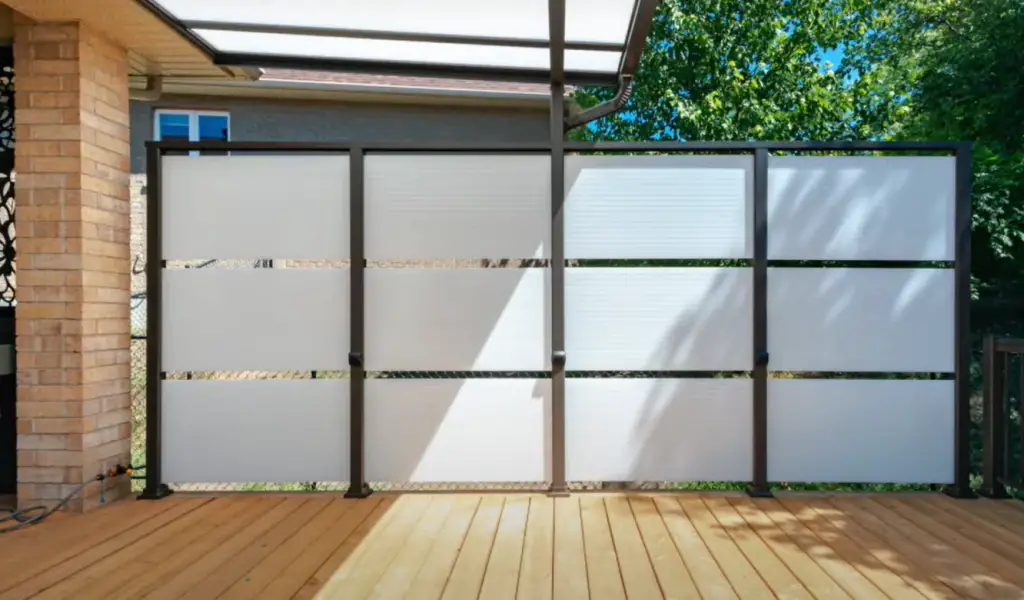
Finally, remember to check your windbreak for damage after storms or heavy winds, as this may require repairs. A professional can be consulted to help waterproof and maintain your windbreak if needed.
Can I use a windbreak to reduce noise pollution?
Yes, windbreaks can help to reduce noise pollution in your outdoor space. This is because they act as a barrier between your home or garden and the outside world, thereby reducing the amount of sound that enters.
Additionally, windbreaks can also be customised with additional materials such as trellises or fences to further reduce noise pollution. Finally, remember to check your windbreak for damage periodically and seek the help of a professional if needed.
Useful Video: StopBreeze® Garden & Patio Windbreaks
Conclusion
Utilising windbreaks in our gardens is a great way to protect and add beauty to our outdoor spaces. With the variety of shapes, sizes, colours and materials available, it’s easy to create a windbreak solution specifically crafted for our garden.
Whether we choose evergreen shrubs, trees, walls or fences, adding features like trellises or plantings can provide even more protection while also adding visual interest.
With a little bit of research and some creative problem solving skills our outdoor area can be transformed into a tranquil spot even during the blustery days of winter. Get creative and enjoy exploring all the garden windbreak options today!
References:
- https://www.gardenpatch.co.uk/garden-windbreak-ideas/










Leave a Reply
View Comments